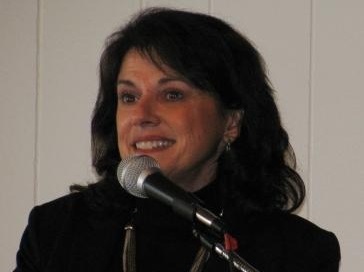Wisconsin’s legislature has expanded school vouchers statewide in a budget measure that passed the Senate by one vote. The expansion will allow up to 500 low-income students next year and up to 1,000 in following years to attend private schools, in addition to those already using vouchers in Milwaukee and Racine schools.
“I hope … as the program grows over the next two years, that the people in the outstate areas of Wisconsin who aren’t as familiar with the program … will have an opportunity to see that the program is successful. It makes a difference in the lives of families who find that their children are trapped in schools that are failing them,” said state Sen. Leah Vukmir (R-Wauwatosa).
The enrollment caps limit vouchers to 0.02 percent of the state’s student body, and only allow a 4 percent increase in students using vouchers, said Christian D’Andrea, an education policy analyst at the Wisconsin-based MacIver Institute.
‘Luck of the Draw’
Students are eligible for vouchers if their families earn no more than 185 percent of the federal poverty level, and only 1 percent of students in a given district can use vouchers, requiring a lottery system.
“It’s going to be a crapshoot, luck-of-the-draw situation for a lot of these students,” D’Andrea said.
A previous proposal from Gov. Scott Walker (R) would have expanded vouchers to any district of at least 4,000 students where at least two schools earn low marks on a state report card, which would have included nine districts.
The governor signed the measure refusing to use his line-item veto to remove the enrollment cap, because that was the deal he made with Republican lawmakers who otherwise would not have approved the bill in a mid-June vote.
“Our focus should be on the quality of education, regardless of school type,” said Walker spokesman Tom Evenson.
Per-pupil public school funding will increase by $300 by 2015, a measure added to soothe concerns about the program reducing school funds, D’Andrea said.
Wisconsin spends about $12,600 per pupil for public schools. The budget increased the voucher amount, which in Milwaukee and Racine was frozen at $6,400, to $7,000 per K-8 student and $7,800 per high school student.
Long-Term Possibilities
Vukmir said she’s a purist, but a realist, about school choice.
“I was disappointed: I wanted the expansion to go further, but I understand the dynamics and the political landscape,” she said. “I’m glad that we at least have a foothold for statewide expansion.”
The expansion will give lawmakers across Wisconsin an opportunity to see vouchers in action, Vukmir said.
“We’re used to it,” she said, noting that her district is near Milwaukee and Racine. “It does not cause a lot of the problems opponents usually like to claim.”
When applications exceed the enrollment cap, lawmakers and voters will see the program’s benefits, says Brian Pleva, a Wisconsin government affairs associate for the American Federation for Children.
“Once people realize that there’s way more than 500 or even 1,000 students throughout the state that are making the income eligibility requirements, they see that there’s a lot more people who would take advantage of this right, given the opportunity,” he said.
It’s tough to predict the future, D’Andrea noted, but “based on history, there’s a definite chance that we will see an expansion in the next decade.”
Meeting Individual Needs
Vouchers give children the opportunity to study at a school that may fit their individual needs, Pleva said, “especially if you’re a parent who’s stuck in a school that’s not working for your child and you can’t afford to move to a better school district and you can’t afford to pay the private school tuition.”
Vukmir said she hopes to see open enrollment for school choice programs in Wisconsin, for all students, not just those from low-income families.
“A parent who is not happy with their child in the school should have some ability—as taxpayers who are paying taxpayer dollars for those schools—to put their children in a school, public or private, or even to homeschool, and have resources covered for that,” she said.
Image by WisPolitics.com.




